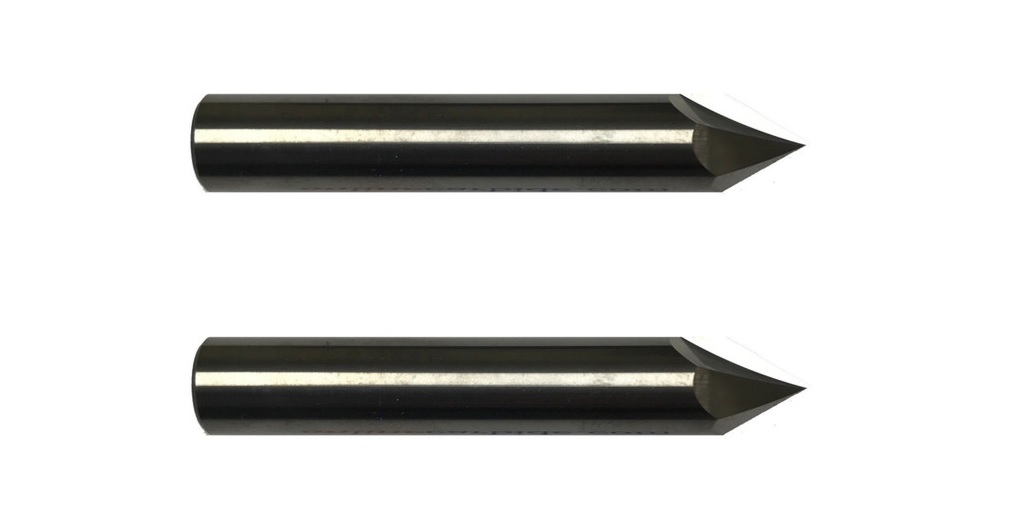Ever spent hours meticulously setting up your CNC machine, only to be met with a frustrating outcome – a rough, uneven surface finish riddled with chatter marks? Chatter, the rapid vibration that occurs during machining, is a common enemy of machinists, leading to wasted time, ruined workpieces, and increased tool wear.
Chatter arises from the complex interaction between the cutting tool, the workpiece material, and the machining parameters. Imagine a skipping record player needle – that erratic movement is similar to what happens during chatter.
The vibrations create microscopic gouges and inconsistencies on the machined surface, compromising the quality and dimensional accuracy of your workpiece. This can be particularly problematic in applications requiring high precision, such as aerospace components or medical devices.
Benefits of Using Variable Flute End Mills for Reduced Chatter
The advantages of using variable flute end mills go beyond simply achieving a flawless surface finish. Here’s how they can better your machining experience:
- Improved Quality: Reduced chatter translates to cleaner, more precise cuts. This translates to an increase in the overall quality of your machined parts.
- Faster Machining: Smoother cutting allows for potentially higher feed rates and faster machining times, which then means better and faster productivity on your part.
- Extended Tool Life: Less vibration translates to reduced wear and tear on your variable flute end mills. This means you get to extend the lifespan of your tools and overall reduce replacement costs.
- Versatility Across Materials: Variable flute end mills perform exceptionally well on various materials, from soft aluminum to tougher steels and plastics.
How to Choose the Right Variable Flute End Mill
With the wide range of variable flute end mills available, selecting the right one for your specific application is crucial. Consider factors such as:
- Material: Choose a variable flute end mill designed for the material you’re working with, ensuring optimal performance and tool life.
- Shank Diameter: Ensure the shank diameter of the end mill is compatible with your CNC machine’s collet size.
- Number of Flutes: The number of flutes affects chip evacuation and cutting efficiency. More flutes are generally better for softer materials, while fewer flutes might be suitable for harder materials.
- Flute Angle: The flute angle impacts chip removal and chip size. A steeper flute angle is often preferred for deeper cuts and harder materials.
Equipping Yourself for Chatter-Free Machining: Online Carbide’s Variable Flute End Mills
Now that you’re convinced of the power of variable flute end mills for achieving a flawless surface finish, it’s time to equip yourself with the right tools.
Online Carbide prides itself on offering exceptional cutting tools made in the USA using premium 10% cobalt micrograin material. This high-quality material ensures exceptional performance and durability, comparable to – or even exceeding – bigger brand names, but at a significantly lower cost.
Here are just a few of the variable flute end mills available from Online Carbide:
- 1/8″ 3 Flute Stub ZRN: This versatile option features a 1/8″ diameter with three flutes for efficient chip removal. The stub length and square end make it ideal for shallow profiling and slotting applications. The 37° helix angle and ZRN coating further enhance chip evacuation and tool life.
- 3/16″ 3 Flute Stub ZRN: This slightly larger option boasts a 3/16″ diameter and maintains the same three-flute design for excellent chip handling. The stub length and square end provide stability for precise cuts in confined spaces. Similar to the 1/8″ option, it features a 37° helix angle and ZRN coating for optimal performance.
- 1/4″ 3 Flute Stub ZRN: For tackling slightly wider cuts, this variable flute end mill offers a 1/4″ diameter with three flutes. The stub length and square end provide control for detailed work. The 37° helix angle and ZRN coating ensure smooth cutting and extended tool life.
These are just a sample selection – Online Carbide offers a comprehensive range of variable flute end mills in various sizes and configurations to suit your specific needs. With their commitment to quality and affordability, Online Carbide empowers you to conquer chatter and achieve machining excellence without breaking the bank.
Visit their website today to explore their complete selection and find the perfect variable flute end mills to elevate your machining game!
For more information about Carbide Cutting Tools and Thread Mill Pipe Thread please visit:- Online Carbide






